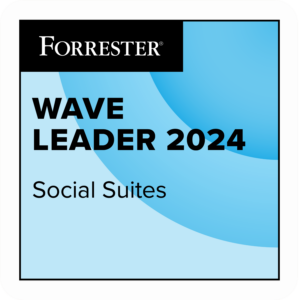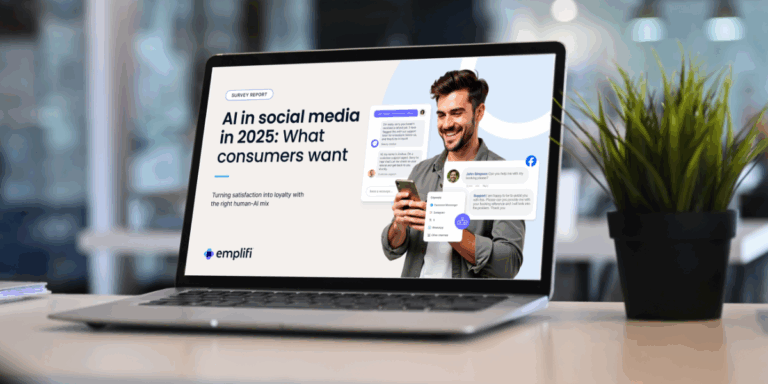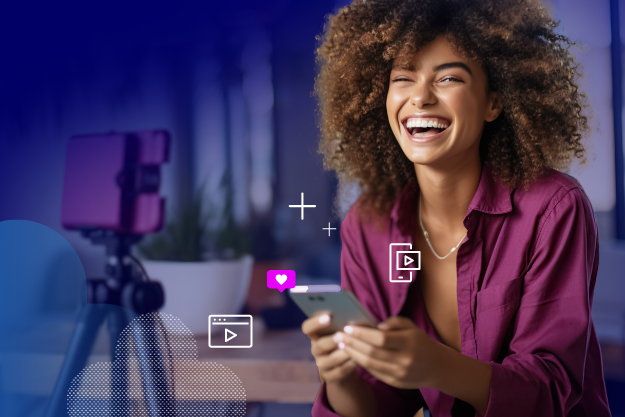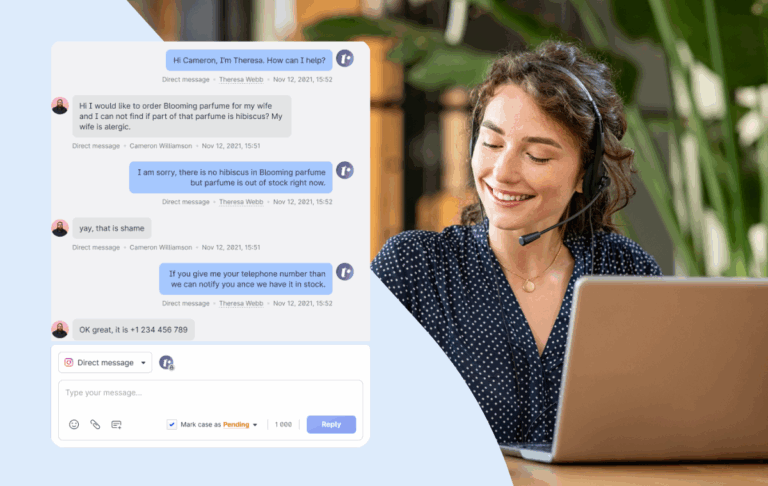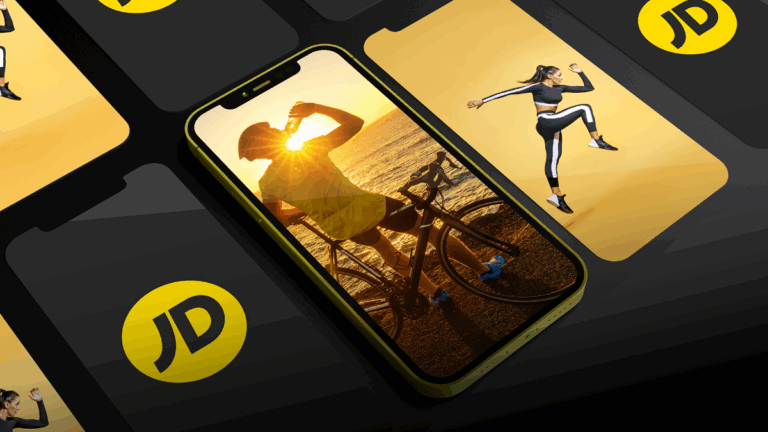It can be a struggle to hold the attention of today’s savvy social media users. How can brands keep brands competing with GIFs, memes, and an endless supply of animal-themed viral content?
The answer is to fight fire with fire, or at the very least, fire emojis. Your brand needs visual storytelling to stay relevant to audiences. Whether it’s through compelling images, engaging videos, or interactive content, the strategic use of visuals can dramatically enhance how audiences connect with your brand.
Integrating images, videos, and other forms of visual content can significantly boost your social media engagement. Ready to learn how? This article will help you leverage the full spectrum of visuals to not only attract attention, but also encourage active participation and build a loyal community online.
Entry#CvAiofTjUJDj8ggUTVhts
Table of contents
<div id=”what-is-visual-storytelling”></div>
What is visual storytelling?
Visual storytelling is the art of using imagery, including photos, illustrations, videos, infographics, animations, and other visual content, to communicate a narrative or message. This technique engages audiences by presenting information in an accessible, appealing, and emotionally impactful way.
This type of content strategy tends to be highly effective for social media because the channels themselves are visual mediums, and today’s audiences have more items competing for their attention spans. So, if a picture is worth 1,000 words, then visual storytelling is a way to milk even more characters out of each audience interaction to convey complex information quickly and memorably.
<div id=”what-is-considered-visual-content-on-social-media”></div>
What is considered visual content on social media?
The spectrum of content types for visual content on social media might surprise you. Visual content is typically considered images, videos, live videos, infographics, animations, and illustrations. It’s everything except copy-based social posts – except, of course, when text is used as a visual – and that brings things like memes and animated GIFs into consideration.
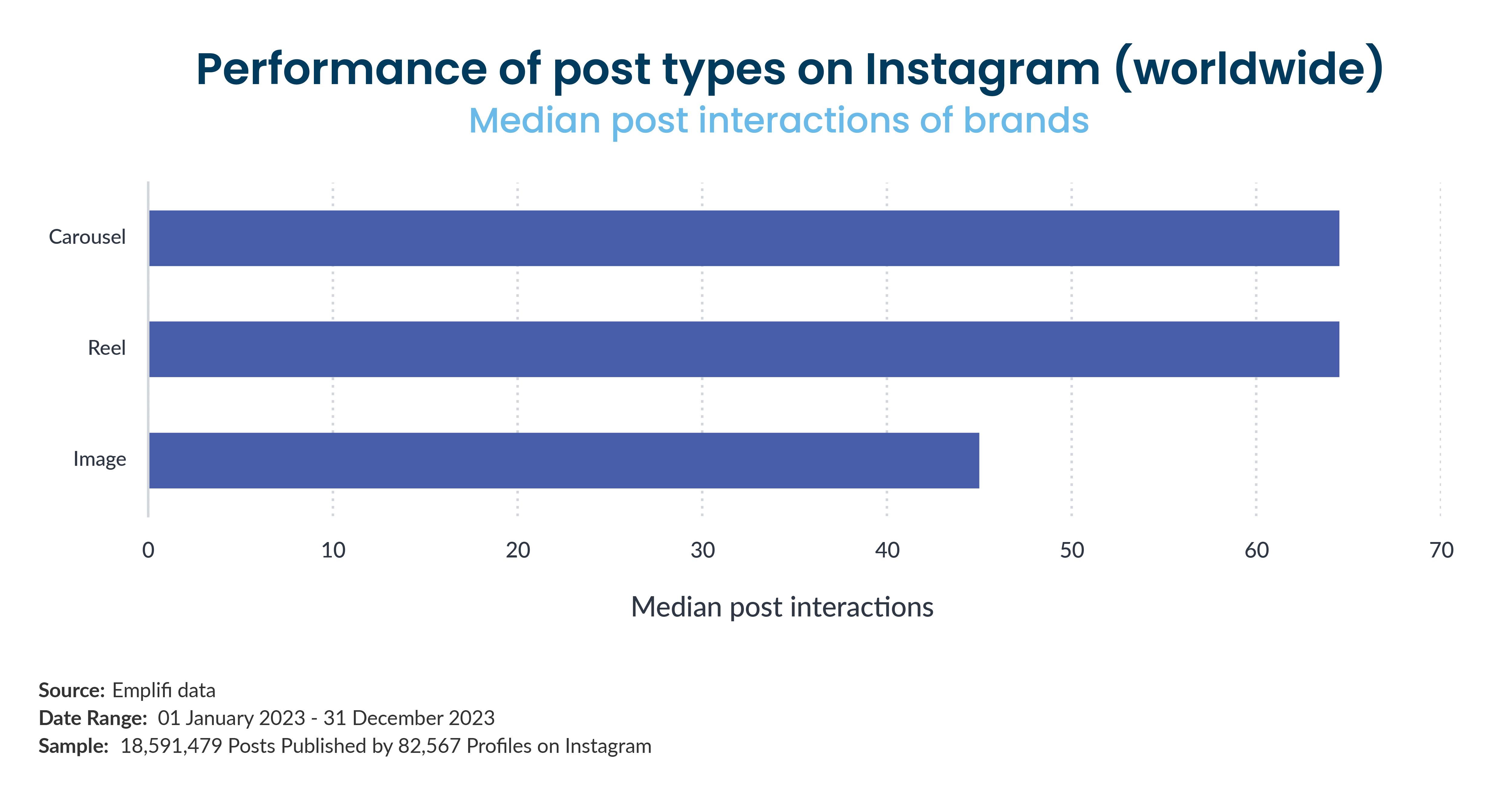
If you’re on social media, then you’re likely to know this already as a digital native. However, what’s easy to overlook are the considerable ways to deploy visual content on social media. Let’s look at some of the content types for visual content on social media:
- Photos and images: Well-chosen images tell a story on their own, and even though video is a powerful engagement tool, you’ll still need a good mix of static content.
Short-form videos: Instagram Reels or TikTok videos are the king of quick, engaging content and a must-have content type.
- Long-form videos: The barometer for “long” will continue to shift, but in-depth content – like YouTube – still has an important role to play in your content strategy.
- Live videos: Video streams through events, Q&A sessions, or brand ambassadors have considerable engagement potential and can provide a unique use for real-time customer engagement.

Those are your foundational elements. On their own, each is a compelling and potent tool for social media engagement. But don’t forget to try some advanced tactics like these – assuming they align with what you know about your audience:
- Augmented reality (AR) filters: Create custom filters for platforms like Instagram or Snapchat to heighten interactivity.
- Carousel posts: Use carousels on Instagram or Facebook to tell a story that unfolds across several images or graphics.
- Charts and graphs: Share visually appealing data presentations to highlight statistics or trends relevant to your audience.
- GIFs: Few visual content types are as effective at connecting emotionally with audiences through relatable animated responses. Just make sure it’s the emotion you intend to translate.
- Infographics: Break complex information into digestible, visual formats. And if those are animated, even better.
- Memes: Tap into current trends with relevant, humorous content that resonates with your audience. However, make sure whatever you share is brand-appropriate.
- Polls and quizzes: Incorporate these into images or videos to interact directly with audiences.
<div id=”what-is-the-importance-of-visual-content”></div>
What is the importance of visual content?
If you want proof of the importance of visual content, start with performance. The highest-performing content on each social media channel is visual, and that performance increases with interactivity or movement.
That’s what modern audiences tend to expect. They’re primarily fed visual content across each social channel, and those content types perform extremely well. Why? Instagram Carousels require viewer interaction. GIFs communicate information quickly. And live video on channels like Facebook fuel real-time feedback. These are heavily visual and interactive content types that are driving success for brands on social media.
It’s also why the leading channels for brands’ content activations – Instagram and TikTok – are also two of the most inherently visual mediums across all social media. According to Emplifi’s 2024 social media benchmarks report, Instagram leads all channels by a significant margin for paid and organic post interactions (per 1,000 impressions), while it and TikTok hold a sizable margin in median content activations per page.
These channels are driven by visual content, and the growth of this trend has spilled across all other social media. That means that consumer behaviors are starting to shift very clearly toward this type of connection and communication with your brand.

<div id=”how-to-utilize-visual-content-to-increase-social-media-engagement”></div>
5 ways to utilize visual content to increase social media engagement
It’s crucial to capture and maintain your audience’s attention to increase engagement. Leveraging visual content not only grabs attention, but it can significantly enhance the experience for your audience, followers, or customers.
Where should you start? Here are five effective strategies to harness the power of visuals on your social platforms to increase engagement:
1. Share high-quality, authentic images
Regular posts with high-quality, original photos help your content stand out in crowded feeds. Authentic imagery resonates more with audiences than stock photos, as it conveys a more genuine and relatable perspective of your brand. But, depending on your available resources, you might have to find sources for these assets. Many brands turn to influencer marketing. Relationships with these types of creators can help improve the quality of your images, but they might also open doors for new audiences to engage.
2. Leverage user-generated content
Similar to influencer marketing is user-generated content (UGC), which goes one step further and involves sharing content from your customers. Based on an Emplifi survey conducted by Harris Interactive, 54% of consumers always or regularly research online pictures or videos of real people prior to purchasing an item. That’s why it’s good to encourage your followers to share their own photos and videos using your product or service.
Entry#13p4FQbhb1H5hvw93qMkNq
Reposting UGC not only fills your content calendar but also builds community and trust by showing real people enjoying their experience with your brand. That could lead to as much as a 14x increase in reach and 3.2x increase in engagement, according to Emplifi data. UGC is a powerful tool for both community engagement and customer conversion.
3. Embrace the power of video content
Videos are the leader when it comes to engagement. From short and snappy TikTok videos to in-depth YouTube tutorials, videos can provide value and entertainment. Use live videos to interact in real-time and create a genuine connection with your audience, particularly on Facebook. If you already have established influencer relationships and UGC programs, you’ll find it easier to source short-form content for Instagram Reels and TikTok, which tend to outperform all other video content.

4. Create interactive stories
Instagram and Facebook Stories are temporary, making them perfect for urgent calls to action. Use polls, swipe-up links, and question stickers to encourage interaction, making your audience part of the conversation. This type of interactivity is key for grabbing the attention of whoever you hope to engage.
Carousel posts also allow you to showcase multiple images, graphics, and videos in a single post. Use this to tell a story, explain a process step by step, or highlight different products — this will encourage users to swipe through and spend more time with your content.
5. Educate with infographics and data visualization
This type of visual content is very dependent on your audience. However, data visualization can be a unique way to connect with your followers. Infographics are a great way to share complex data and statistics in a way that simplifies information into engaging, easy-to-understand visuals. This is particularly effective for educational content or industry-specific data that positions your brand as an authority.
<div id=”visual-storytelling-use-case”></div>
Use case: An example of how a brand might test visual content
Let’s walk through a hypothetical example of how visual content can impact your brand, and the steps you should consider when testing your own engaging content.
Imagine you’re a leading brand that wants to increase its social media presence and engagement by leveraging video content across multiple platforms. Despite having high-quality content, the brand struggles to achieve desired engagement levels and convert viewers into customers.
You share many high-quality images and videos produced by an agency, but you don’t see engagement levels through likes, shares, or comments that warrant your current investment.
Define an objective to test
You want to start with something that you can test and iterate. Let’s start with video length. To optimize video content for increased engagement and higher conversion rates, you’ll need to tailor video length to each social media platform’s audience preferences.
Do you already know those preferences? If not, you’ll need to start with an audience analysis. Your brand must conduct in-depth research to understand your target audience’s viewing habits and preferences across different platforms. A thorough review of your social media analytics will help guide this decision.
Create diverse content types
Video length is important, but the subject matter of the video matters just as much. If you have a clear level of detail about your audience, focus on proving what you know. But if you have knowledge gaps, make sure you develop a range of video content, including product highlights, customer testimonials, and UGC, to appeal to a broad audience.
Here’s where you can start testing optimized lengths:
- Short-form videos for Instagram and TikTok: Create 15- to 30-second videos showcasing quick product features, customer ratings and reviews, or UGC, designed for quick consumption.
- Mid-length videos for Facebook and LinkedIn: Produce 1- to 2-minute videos that dive deeper into product technology, customer testimonials, and brand stories.
- Long-form videos for YouTube: Develop in-depth videos over two minutes long, including tutorials, detailed product reviews, and stories that expand upon your customer relationships.
- A/B testing: Test different video lengths on each platform to identify the optimal length for engagement and conversion.
What to look for in each channel
Performance and benchmarks will depend on your audience, but here’s the type of performance to keep an eye on which might influence your overall strategy.
- Instagram and TikTok: Look for spikes in engagement rate, particularly for shares and comments, which suggests higher content virality. Video that works here might be your best fit for paid amplification or use on other platforms.
- Facebook and LinkedIn: Watch for view completion rates and identify where dropoff is occurring. This might lead to new ways to structure or tease your content.
- YouTube: Long-form videos might lead to an increase in subscription rates after viewing. This could indicate strong content resonance and audience investment.

What you’ll learn from this type of test
This exercise helps frame tactics improvements to influence your overall content strategy, and it’s particularly helpful for video content due to the investment needed to scale such an effort.
Here’s why it’s important to conduct tests like this:
- Audience preferences: The importance of understanding and adapting to the specific viewing habits of your audiences on each social media platform.
- Content strategy flexibility: The need for a dynamic content strategy that incorporates a variety of video lengths to cater to your audience’s different engagement patterns.
- The impact of video length: Optimizing video length based on platform and content type can significantly enhance engagement and conversion outcomes.
This use case exemplifies the critical role of video length in crafting a successful social media strategy. By tailoring content to fit platform-specific audience preferences, your brand can not only improve its social media performance, but also deepen its connection with its target audience.
The same exercise can be done with other visual content types. The key is to understand what you know about your audience and its preferences, then test that with each content type to find ways to adjust your content to increase connection, engagement, and conversion.
Get started with visual storytelling on social media
Visual storytelling and content require more investment and organization, but that effort is worth it to engage today’s audiences. If you’re curious how to get started, please download our tool kit on visual storytelling on social media. This will prepare your social marketing team for how to plan across content types, channels, and sources to increase engagement for your brand.
